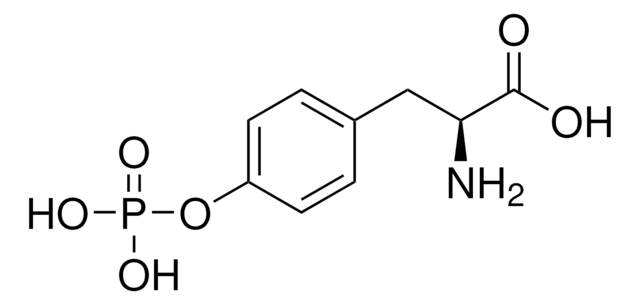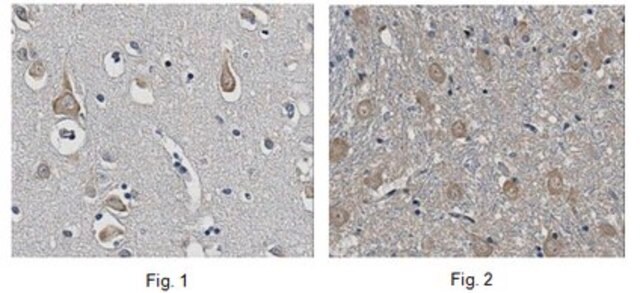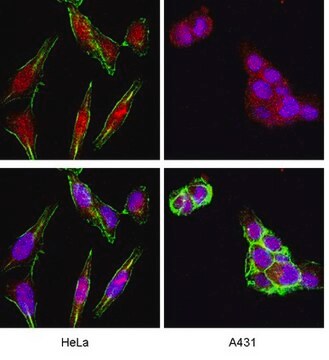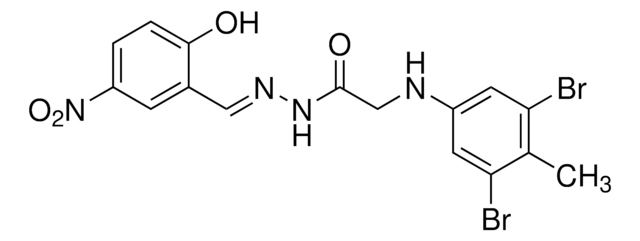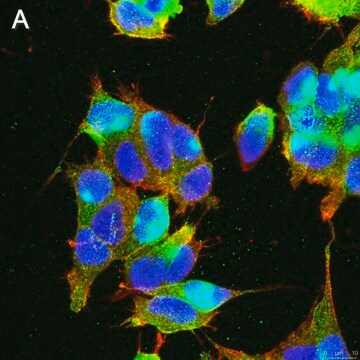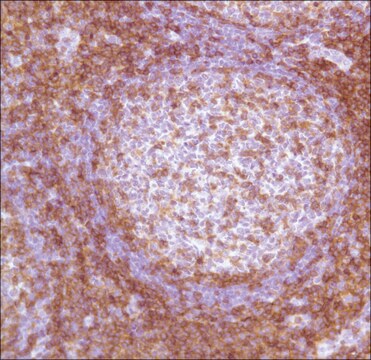525295
PhosphoDetect Anti-Phosphotyrosine Mouse mAb (PY20)
liquid, clone PY20, Calbiochem®
About This Item
Productos recomendados
origen biológico
mouse
Nivel de calidad
forma del anticuerpo
purified antibody
tipo de anticuerpo
primary antibodies
clon
PY20, monoclonal
formulario
liquid
contiene
≤0.1% sodium azide as preservative
reactividad de especies (predicha por homología)
all
fabricante / nombre comercial
Calbiochem®
condiciones de almacenamiento
OK to freeze
avoid repeated freeze/thaw cycles
isotipo
IgG2b
Condiciones de envío
wet ice
temp. de almacenamiento
−20°C
modificación del objetivo postraduccional
phosphorylation (pTyr)
Información sobre el gen
human ... PID1(55022)
Descripción general
Inmunógeno
Aplicación
Immunoblotting (1:500-1:1000, see application references)
Frozen Sections (see application references)
Immunocytochemistry (see application references)
Immunoprecipitation (see comments)
Envase
Advertencia
Forma física
Reconstitución
Nota de análisis
Any cell lysate or tissue extract
Otras notas
Información legal
¿No encuentra el producto adecuado?
Pruebe nuestro Herramienta de selección de productos.
Código de clase de almacenamiento
10 - Combustible liquids
Clase de riesgo para el agua (WGK)
WGK 1
Punto de inflamabilidad (°F)
Not applicable
Punto de inflamabilidad (°C)
Not applicable
Certificados de análisis (COA)
Busque Certificados de análisis (COA) introduciendo el número de lote del producto. Los números de lote se encuentran en la etiqueta del producto después de las palabras «Lot» o «Batch»
¿Ya tiene este producto?
Encuentre la documentación para los productos que ha comprado recientemente en la Biblioteca de documentos.
Nuestro equipo de científicos tiene experiencia en todas las áreas de investigación: Ciencias de la vida, Ciencia de los materiales, Síntesis química, Cromatografía, Analítica y muchas otras.
Póngase en contacto con el Servicio técnico